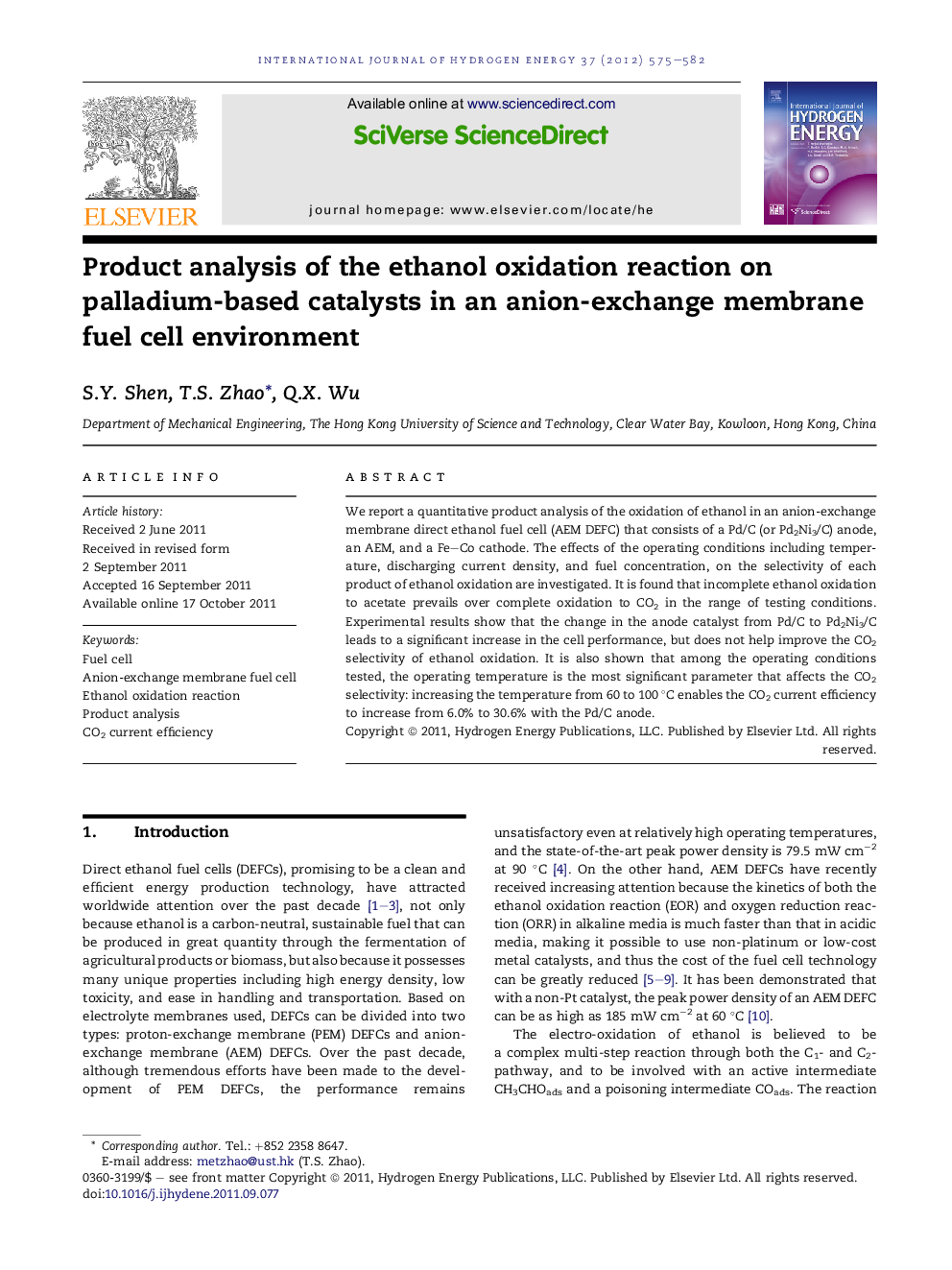| Article ID | Journal | Published Year | Pages | File Type |
|---|---|---|---|---|
| 1277171 | International Journal of Hydrogen Energy | 2012 | 8 Pages |
We report a quantitative product analysis of the oxidation of ethanol in an anion-exchange membrane direct ethanol fuel cell (AEM DEFC) that consists of a Pd/C (or Pd2Ni3/C) anode, an AEM, and a Fe–Co cathode. The effects of the operating conditions including temperature, discharging current density, and fuel concentration, on the selectivity of each product of ethanol oxidation are investigated. It is found that incomplete ethanol oxidation to acetate prevails over complete oxidation to CO2 in the range of testing conditions. Experimental results show that the change in the anode catalyst from Pd/C to Pd2Ni3/C leads to a significant increase in the cell performance, but does not help improve the CO2 selectivity of ethanol oxidation. It is also shown that among the operating conditions tested, the operating temperature is the most significant parameter that affects the CO2 selectivity: increasing the temperature from 60 to 100 °C enables the CO2 current efficiency to increase from 6.0% to 30.6% with the Pd/C anode.
► Incomplete ethanol oxidation to acetate prevails over complete oxidation to CO2 in the range of testing conditions. ► Among the operating conditions tested, the operating temperature is the most significant parameter that affects the CO2 selectivity. ► Increasing the temperature from 60 to 100 °C enables the CO2 current efficiency to increase from 6.0% to 30.6%.
